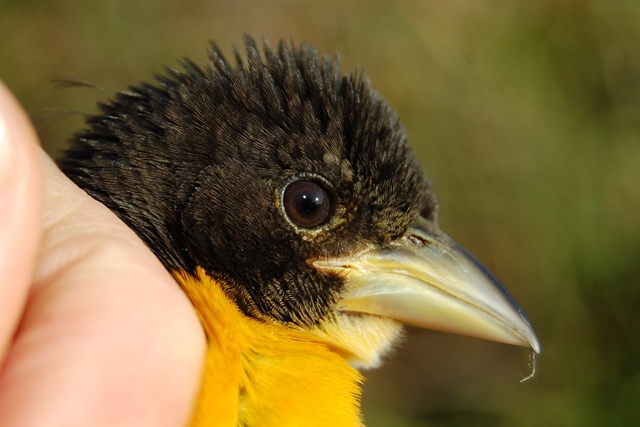Dark-backed Weavers are locally common in forest patches along the eastern seaboard of Africa and across Eastern and central Africa to Cameroon. Their nests may be obvious, hanging above forest paths. Nests of this species are invariably sited singly in trees, although occasionally an old nest or two from previous breeding seasons may be near the current nest. Nests usually have a long entrance tunnel. Nests of the Dark-backed Weaver may be viewed at a citizen science project, PHOWN (PHOtos of Weaver Nests).

Less than 400 Dark-backed Weavers, however, have been ringed in South Africa, the lowest species total for any South African weaver species. This is partly due to the fact that they often forage high in the canopy, where it is difficult to place mist-nets, although they do descend to lower levels as well. They also usually occur in pairs, not in flocks as many of the gregarious weavers, although the Dark-backed Weaver may join foraging mixed-species flocks of insectivorous birds.
The oldest Dark-backed Weaver in the SAFRING database is 5 years 2 months (ring BH34002), but the longevity will be considerably more than this – most weavers have known longevities over 10 years.
Dark-backed Weavers show some plumage variation across their range in Africa – these variations are briefly listed under the different subspecies notes, together with a map of subspecies distributions, at the Weaver Watch species page. Biometrics also vary slightly across its range, but not in any obvious pattern.

Dark-backed Weaver males and females are alike. Juveniles are similar to adults, but there are some features that help separate juveniles (photo below) from adults (photo above). Juveniles have:
• pale gape flanges
• a paler bill (with a yellow tinge in above above, compared to bluish-grey in adult)
• mottled or pale throat
• darker brown eye

Would you like to ring a weaver? Book a trip with African Ringing Expeditions!

